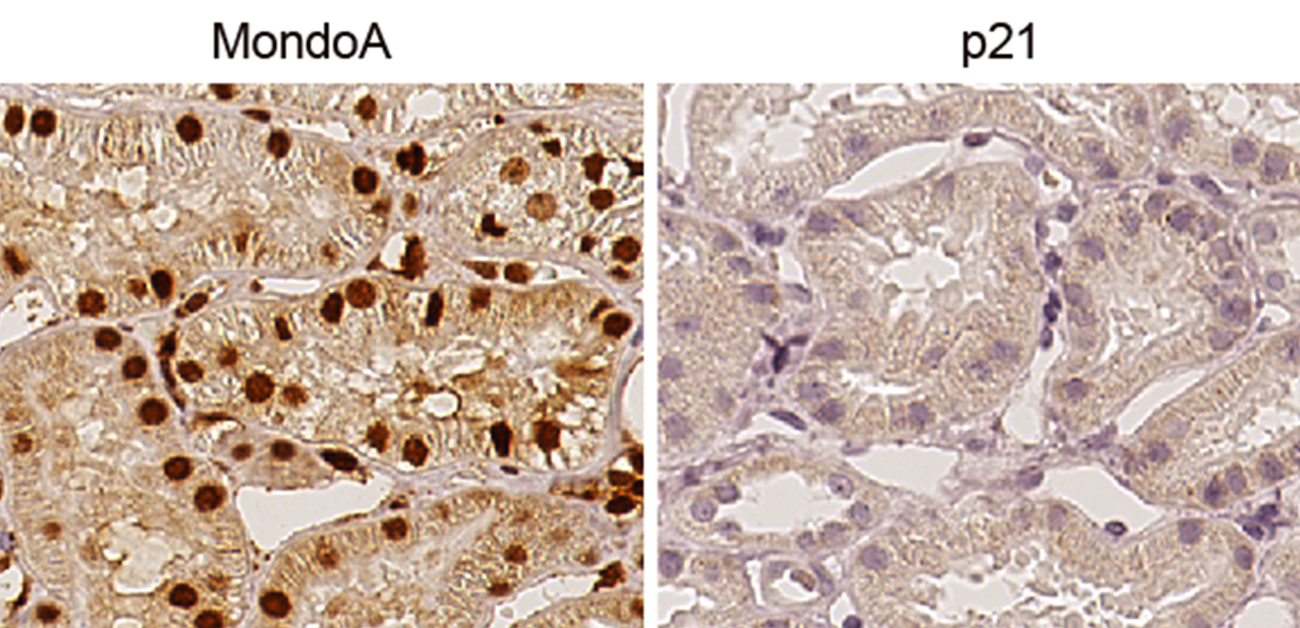
Protect against aging and age-related disease with the MondoA protein
Researchers from Osaka University show that activation of a protein called MondoA can protect against age-related diseases and cellular changes associated with aging
A step toward discovering the fountain of youth could involve protecting against the inevitable accumulation of “senescent” cells associated with aging and age-related diseases. Now, researchers from Japan have identified the Mondo A protein as key to protecting against the accumulation of senescent cells.
In a study published this month in Cell Reports, researchers led by Osaka University have shown that MondoA delays cellular senescence, and therefore promotes longevity, by activating autophagy. Autophagy is a process whereby cells undergo controlled breakdown and recycling of their components, which is important for maintaining stable conditions in the cellular environment and for enabling adaptation to stress. Activation of autophagy by MondoA partly involves suppressing a protein called Rubicon, which is a negative regulator of autophagy. Rubicon can increase with aging in various tissues and model organisms, which can cause the decline in autophagy seen with aging.
Furthermore, MondoA is also essential to maintaining stable conditions of parts of the cell called mitochondria, which are responsible for energy production. MondoA does this by regulating another molecule, Prdx3, which is involved in mitochondrial turnover. Mitochondria are constantly fusing and dividing, which is important for maintaining their health. Prdx3 is part of the process by which autophagy occurs in mitochondria, preventing senescence. The research team led by Osaka University concluded that MondoA plays a key role in the regulation of Prdx3 and therefore in maintaining mitochondrial stability.
Particularly dense accumulation of senescent cells has been observed in the kidney. The researchers therefore looked at ischemic acute kidney injury (AKI) in mice. “Mice with ischemic AKI and reduced levels of MondoA showed increased senescence,” explains lead author Hitomi Yamamoto-Imoto. “We also found that decreased MondoA in the nucleus correlated with human aging and ischemic AKI. MondoA therefore counteracts cellular senescence in aging and ischemic AKI in both mice and humans.”
Drugs that eliminate senescent cells, called senolytics, are currently being considered as treatment for age-associated diseases. However, senescent cells play important roles, and their complete removal may have considerable side effects. “Our work shows that the transcriptional activation of MondoA can protect against cellular senescence, kidney injury associated with aging, and organismal aging,” explains senior author Tamotsu Yoshimori. “Activation of MondoA and therefore autophagy could be a potentially safe therapeutic strategy.” This work could well open new and safer avenues for the treatment of aging and age-related diseases.

Fig. 1 MondoA depletion promotes senescence
Staining images of SA-b-gal-positive senescent cells (blue). In siMondoA-treated cells, SA-b-gal positivity was increased, even in a doxorubicin-induced senescence model.
(CC-BY, credit: 2022 Yamamoto-Imoto et al. Age-associated decline of MondoA drives cellular senescence through impaired autophagy and mitochondrial homeostasis. Cell Reports)

Fig. 2 MondoA counteracts cellular senescence in aging and ischemic AKI in humans
Immunostaining images of MondoA and the senescence marker p21 in kidney biopsy samples from young and aged individuals, and from ischemic acute kidney injury (AKI) patients. In kidneys from aged individuals and ischemic AKI patients, the number of p21-positive cells (right, brown) was higher compared with young individuals, and this was accompanied by decreased expression of MondoA (left, brown) in the nucleus (purple).
(CC-BY, credit: 2022 Yamamoto-Imoto et al. Age-associated decline of MondoA drives cellular senescence through impaired autophagy and mitochondrial homeostasis. Cell Reports)
The article, “Age-associated decline of MondoA drives cellular senescence through impaired autophagy and mitochondrial homeostasis,” was published in Cell Reports at DOI: https://doi.org/10.1016/j.celrep.2022.110444.
